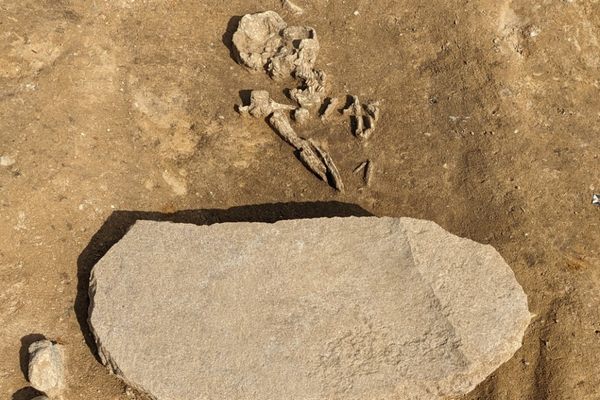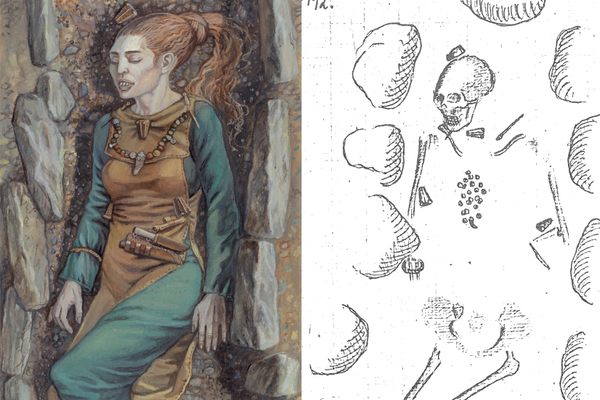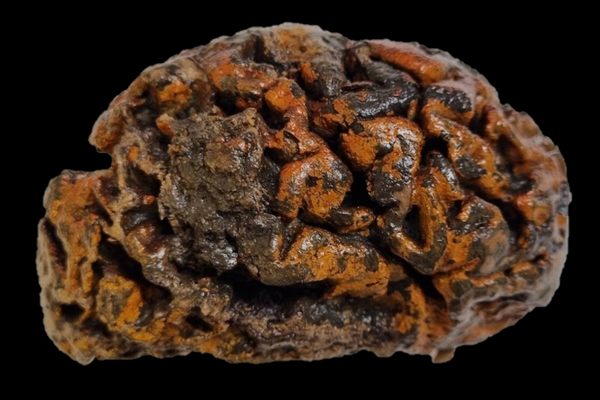In Indonesian Caves, a Treasure Trove of Forgotten Ancient Paintings
The images show dynamic scenes of dogs and drums.

The small Indonesian island of Kisar, off the coast of Timor, is remote and inaccessible. Home to just a few thousand people, it had never been the site of a full archaeological exploration before a recent expedition by researchers from the Australian National University in Canberra, despite being a key site in the historic international spice trade.
The island is almost entirely surrounded by ancient coralline limestone terraces, which run parallel to the coastline. Over the centuries, the sea has worn shelters and caves into the terraces. Within these nooks and crannies, archaeologists found 28 galleries replete with amazingly well-preserved rock paintings, done by people dead for millennia.

The paintings themselves are tiny, barely four inches in height, and show dynamic scenes including boats, dogs, horses, and people often holding what look like shields, said Sue O’Connor, the lead archaeologist on the project. “Other scenes show people playing drums,” she said in a statement, “perhaps performing ceremonies.” These figures, painted in shades of ocher, burnt umber and russet-red, remain in extraordinary condition, despite being as much as 2,500 years old. In other places, red pigment has been smeared on the walls to accentuate natural features in the rock.

What they suggest, O’Connor said, was that this remote island likely had a closer relationship with Timor than previously thought, perhaps dating as far back as 3,500 years ago. They may be the result of Austronesian settlers, who introduced domestic animals (those dogs!) to the island, as well as cereal crops. But they also bear striking similarity to images on metal drums produced in what is today northern Vietnam and southwest China 2,500 years ago. Either way, the pictures tell a vivid archaeological story—though exactly what it is, is yet to be deciphered.










Follow us on Twitter to get the latest on the world's hidden wonders.
Like us on Facebook to get the latest on the world's hidden wonders.
Follow us on Twitter Like us on Facebook